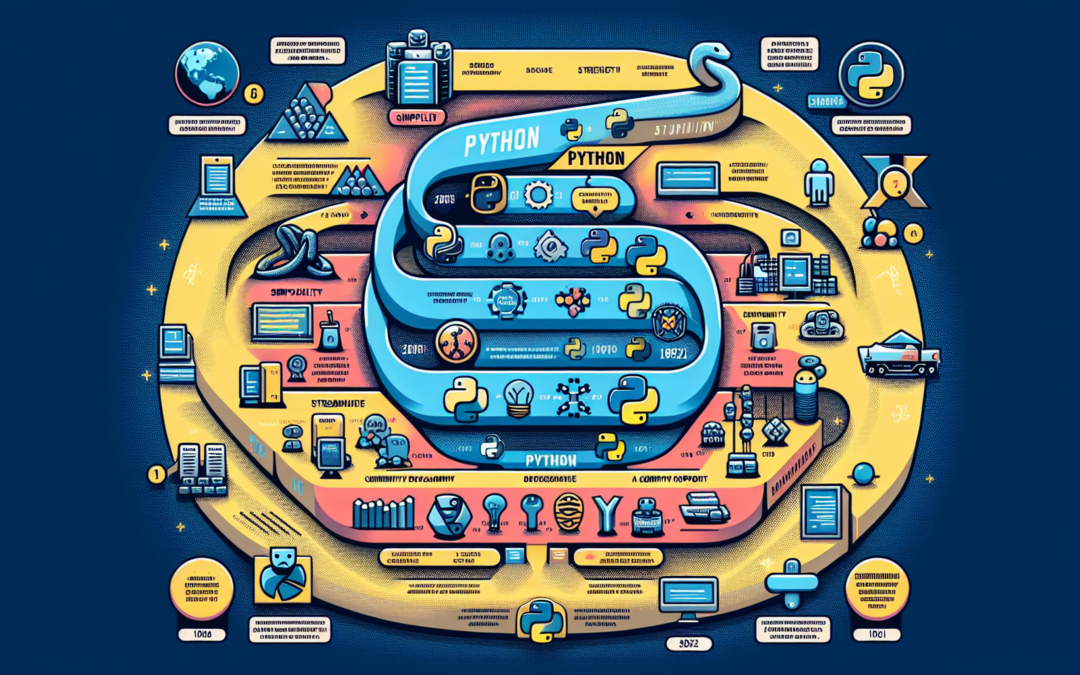A New Dawn in the World of Programming – The Meteoric Rise of Python
Once upon a time, in the late 1980s, a simple yet powerful language was conceived. Fast-forward to 2021 and this language, known as Python, stands tall amongst an extensive list of coding languages. But what is it about this language that has made it the top choice for both beginners and experienced developers alike? Let’s unravel this intriguing narrative of Python’s unprecedented rise in the world of programming.
A Brief Sojourn Down the Memory Lane of Python’s Genesis
The conception of Python dates back to December 1989 when Guido Van Rossum, its creator, started on it as a hobby project during his Christmas holidays. He aimed at creating a language that struck a balance between C and ABC language, offering the simplicity of the latter and the power of the former. Little did he know that his creation would go on to revolutionize the world of programming.
Simple Yet Powerful: The Dual Nature of Python
What sets Python apart from other languages is its simplicity. Unlike cryptic and hard-to-learn languages like C++ or JAVA, Python offers easy-to-understand syntax, akin to English. In fact, its syntax simplifies the concepts of object-oriented programming, loops, conditionals, etc., making it easier for coding novices to grasp these concepts.
However, don’t let its simplicity fool you. Hidden under its unassuming exterior is a robust and powerful language that offers a wide range of libraries and frameworks, making it one of the most versatile languages around.
The Hidden Ace: Python’s Libraries and Frameworks
From web development with Django and Flask, to data analysis with pandas, to AI and Machine Learning with Tensorflow and PyTorch, Python’s wide collection of libraries and frameworks cater to every need of a programmer, thus, making Python a popular choice across industries and applications.
Soothing the Programmer’s Headache: The Painless Debugging in Python
In other languages, debugging can be a nightmare for even the most seasoned programmers. Python, in contrast, offers painless debugging, thanks to its design philosophy. Also, Python has an excellent support community that is ready to help when you come across a roadblock, making debugging quicker and your coding journey smoother.
The Flip Side: Python’s Limitations
However, Python isn’t without its limitations. It may not be the best choice for memory-intensive tasks or where speed is a critical factor, such as in game development or mobile app development. Yet, the pros far outweigh these cons, and Python continues to be a preferred choice for most applications.
Python Today: A Perspective on its Current Prominence
Today, Python has become a go-to language for many, from the nascent coder who has just set foot in the world of programming to the experienced coder working on state-of-the-art AI models. Whether it’s about writing a simple script for a repetitive task or creating complex neural networks for deep learning, Python continues to charm its audience.
Given its benefits and versatility, it’s no surprise that Python has surged in popularity. Today, it stands at the top of the IEEE Spectrum’s rankings of top programming languages, and it appears to be a trend that shows no sign of slowing down.
Summing up the Python Saga
Python’s story is one of simplicity, versatility and community – aspects that make it a preferred choice for many. As the field of programming continues to evolve and diversify, it is safe to say that Python will continue to remain a significant part of this evolving narrative, helping us weave the digital fabric of our future, one line of code at a time.
Author: Hanzala – Software Engineer
Do you have questions or need further clarification? I’m here to help. Email me anytime at hi@hanzala.co.in
